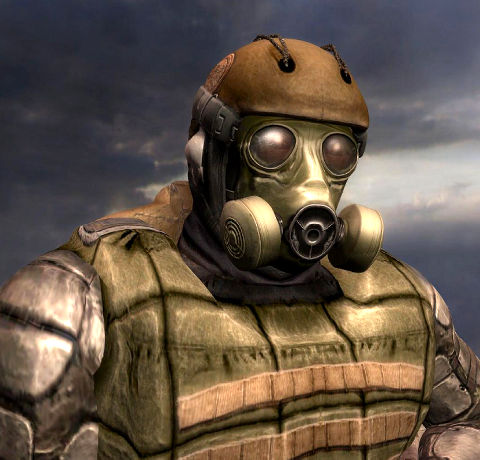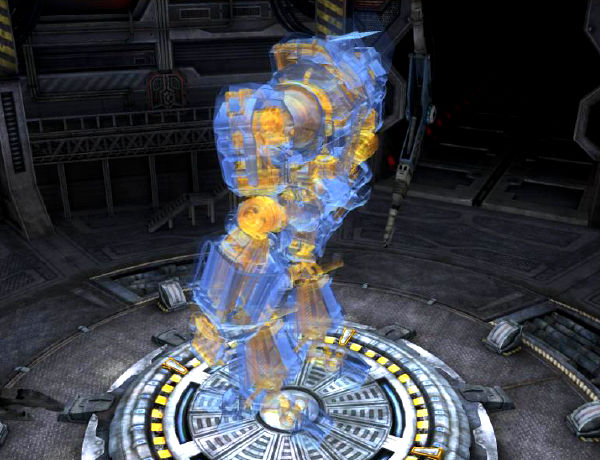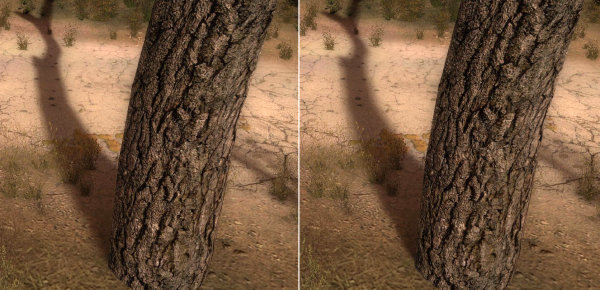 |
||
|
||
| ||
DirectX 11 supportIt's a new version of this graphics API, which works in Windows 7 and Windows Vista (after Windows Update). There are a lot of new features in this version. They have to do with performance improvements and qualitative changes. Performance improvements include multithreaded rendering as well as new features of DirectCompute. Image quality improvements include: tessellation, order-independent rendering of transparent polygons, complex postprocessing, new features of shadow filtering. Running physics computations and AI algorithms on GPUs via DirectCompute looks very promising for games. DirectX 11 features software support for all previous levels of hardware, starting from DirectX 10. Although old DX10 GPUs can support only some of DirectX 11 features, several functions of the new API can make the life of game developers easier. However, sterling DirectX 11 GPUs, such as RV870, are required to reveal full potential of this API version. Only such GPUs can provide support for DirectCompute11 and improved multithreaded rendering. Multithreading will work with old GPUs, if they are supported by new drivers, but performance may be lower than with DX11 GPUs. Shader Model 5.0Shader Model 5 offers a new set of instructions with a more flexible access to data and more convenience for developers. It's a unified set of instructions, the same for shaders of all types: Vertex, Hull, Domain, Geometry, Pixel, and Compute. It uses an object-oriented program model, functions and routines in shader code facilitate development of graphics applications. Let's enumerate some of the new instructions in Shader Model 5.0:
DirectComputeOne of the most important features of the new graphics API is DirectCompute, which gives access to general GPU computing technology (ATI Stream Technology). This feature is especially important, because DirectX API is the industrial standard, it will always be used. There are several levels of hardware support: DirectCompute10 for DirectX 10.0 GPUs, DirectCompute10.1 and DirectCompute11 correspondingly. DirectCompute can be used in image processing and filtering, rendering of semitransparent surfaces without preliminary sorting (Order Independent Transparency), shadow rendering, physics effects, artificial intelligence algorithms, ray tracing. DirectCompute11 supported by the RV870 provides more features than DirectCompute10, here are some of them:
TessellationNew shader types have been added for more convenient tessellation in DirectX 11: Hull and Domain Shaders. Hardware-assisted tessellation in DX11 allows to use a wide range of algorithms and methods: Catmull-Clark Subdivison, Bezier and N-patches, Displacement Mapping, adaptive tessellation (dynamic level of detail). We've touched upon tessellation many times. In brief, it allows to obtain detailed models under light GPU load. Tessellation (breaking a model into triangles) is basically used to create ground and water surfaces, sometimes even for character modeling. You can see it in the next STALKER game -- smooth and round surfaces (and not very good textures):  Order Independent Transparency (OIT)It's drawing semitransparent polygons without preliminary sorting to make rendering of overlapping semitransparent objects (shadow, fire, water, glass, etc) more efficient. Here is AMD's demonstration of the effect:  We cannot say that it's a new feature. Rendering semitransparent surfaces requires preliminary sorting for correct output, as their blending requires a certain draw order. DirectCompute11 features only facilitate such rendering by sorting pixels in a single pass. Atomic operations and append buffers are used for this. PostprocessingDirectCompute can be used to accelerate image postprocessing and make it more complex. There are a lot of postfiltering types: depth of field, motion blur, edge detection, antialiasing, sharpening, etc. Postprocessing requires data about neighboring pixels. DirectCompute significantly facilitates the usage of complex postfilters, increasing their performance and improving image quality. For example, constant time filter spreading imitates the optical depth of field effect, this new technique was developed by AMD together with University of California in Berkeley. It does not require an alpha buffer, and the code uses access to shared memory. As a result, there are fewer artifacts (like halos and sharp silhouettes), higher processing speed compared to usual methods with pixel shaders.  Postprocessing with DirectCompute can also improve shadow rendering algorithms, including ambient occlusion (AMD calls it HDAO -- High Definition Ambient Occlusion). We already described this algorithm, it's a global lighting (shadowing) model used in 3D graphics to make images look more realistic by calculating light intensity on the surface. DirectCompute11 gives extra features to render more realistic shadows, when a shadow becomes more blurry at the edges as it gets farther (that is half-shadows look more realistic). AMD provides the following pictures from the future STALKER: Call of Pripyat:  Improvements and additional formats of texture compressionDirectX 11 allows to compress 16-bit HDR textures, which compression ratio reaches 6:1. It will come in handy in modern games, as they often use such formats. Besides, this version of the graphics API offers improved texture compression quality (confirmed by the best SNR parameter -- signal-to-noise) and reduced pixelization artifacts in textures. Multithreaded renderingIt's one of the long-awaited improvements in DirectX API, which has been available in game consoles for a long time. Now not only an application, DirectX runtime code, and the driver are executed each in its own separate thread, but also such tasks as loading textures or compiling shaders can be started in parallel threads. This innovation will help eliminate bottlenecks in CPU performance in case of many draw calls -- some of them can finally be offloaded to another thread, which can be executed on another CPU core, different from the one running the main rendering thread. Don't confuse it with multithreaded game code! Write a comment below. No registration needed!
|
Platform · Video · Multimedia · Mobile · Other || About us & Privacy policy · Twitter · Facebook Copyright © Byrds Research & Publishing, Ltd., 1997–2011. All rights reserved. |